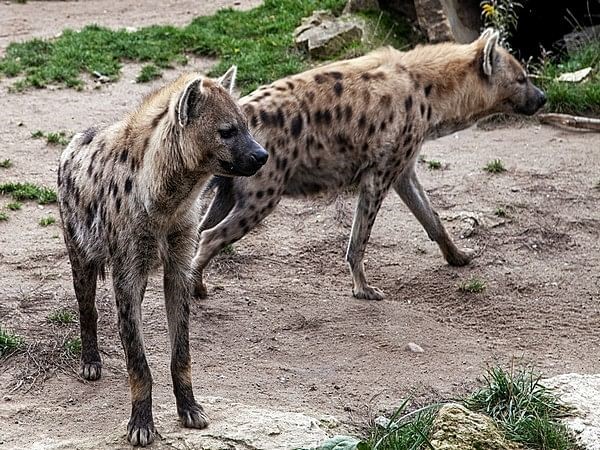Description

Disclaimer: Copyright infringement not intended.
Context
- Max Planck Institute of Animal Behaviour (MPI-AB) studied hyena societies for more than 30 years.
- The study was published in a special issue on inequality in human and animal societies in Philosophical Transactions of the Royal Society, B.
- It was observed that in hyena monarchies power to control is derived from their mothers and goes for a downward slope with the passage of time.
Other Details
- Hereditary power is considered as a stepping stone to absolute control, and in animals this absolute control is generally exercised though diplomacy or cruelty.
- It decides the level of respect, access to food, time to nurture babies and overall quality of life
- In hyena monarchies it is known as maternal inheritance where Hyena clans are arranged in a linear dominance hierarchy.
- Queen is the highest-ranked female followed by her young, and then comes all other females with their young.
- Individuals’ social position fades, except queen, over time in hyenas.
- They can move up in the ladder however instances of sliding down are more often.
Cause of downward trajectory
- Main reason is demographic turnover where another hyena joins or leaves the existing group.
- Joining and leaving happen mainly by way of birth and death.
- It is to be noted that higher-ranking females also give birth to more offspring and they are added to the top of the hierarchy initially.
- This phenomenon pushes all other individuals down over time.

Hyena
- These are the least diverse of the living carnivore The four living species of hyneas are
- Spotted hyena
- Brown hyena
- Aardwolf and
- Striped hyena
- They belong to the Hyaenidae family of Hyaena genus.
- They are hunters and catch their prey using their teeth instead of claws.
Features
- They have short torsos and wolf-like massive build.
- Forelegs are high in comparison to the hind legs.
- They generally appear gray, brown, or yellowish.
- They have short and thick neck.
- Short and blunt claws force them to use teeth for hunting.
- Spotted hyena is very capable of producing sound.
- They live both ways that is alone or in packs.
Distribution
- Main habitats of Hyenas are dry grasslands with few trees.
- They are found in whole of the African continent with more concentration in southern part of the continent.
- They also have their presence in Asia eastwards through Arabia to India.
Threat
- Some cultures associate these animals with witchcraft hence body parts are used.
- Also in some traditional medicinal systems they are killed to obtain required body parts.
- They attack people and even carry off young children hence they are trapped and killed by hunting or poisoning.
- In some communities they are also killed for food.
- They are also killed during predator control operations.
- Decreasing natural and domestic sources of carrion affects the survival of this species.
- Destruction of habitat due to incidents like forest fires and due to other anthropogenic activities.
Significance to Planet
- These are a part of the mechanism whereby prey populations are kept in balance with their resources.
- Hyenas are useful species as they clean up the environment by eating carrion. Thus help in reducing the disease burden.
- Through digestion, they deposit concentrations of calcium back to environment.
- They can also serve as important subject for scientific research.
- They are an attraction for tourists
IUCN Status
- Status of the Striped hyenas - Near Threatened
- Status of Spotted hyena- Least Concern
- Status of Brown hyena – Near Threatened
- Status of Aardwolf – Least Concern
|
PRACTICE QUESTION
Consider the following statements about Hyenas:
1. They are significant species to maintain the balance of ecosystem and are categorized as endangered species in the IUCN red list.
2. A study on the Hyenas’ societies observes that upward mobility is impossible in Hyenas.
Which of the statements given above is/are correct?
A. 1 only
B. 2 only
C. Both 1 and 2
D. Neither 1 nor 2
Answer: (D)
|

https://theprint.in/science/hyenas-inherit-power-from-moms-but-its-a-privilege-they-pay-dearly-for-study/1643532/












